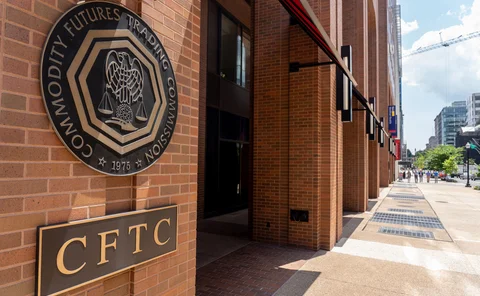CCP
WHAT IS THIS? A central counterparty (CCP) manages default risk by collecting initial and variation margin from both parties to a trade. Spill-over losses are absorbed via a default fund to which all members contribute – introducing a degree of mutualised risk – and by the CCP’s own capital. The concept is an old one that was extended to over-the-counter derivatives in the aftermath of the financial crisis.
Sunil Cutinho on CME’s crisis performance
Maverick clearing house boss dismisses the need for anti-procyclicality tools imposed by regulators
Procyclicality control in risk-based margin models
This paper revisits the procyclicality issue in risk-based margin models and provides additional insight on procyclicality mitigation techniques.
NSCC caught $600m short during meme-stock frenzy
Worst-case losses would have wiped out the CCP’s available liquid resources on one day in Q1
JSCC issued $2.8bn VM call on a clearing member in Q1
The call was for a participant in the CCP’s clearing services that cover IRS, CDS and exchange-traded financial products
NSCC hit by $1.06bn margin breach
In total, the DTCC division reported 96 margin breaches at end-March 2021
Banks invest in futures utility to guard against tech snafus
FCMs, including Goldman and JP, stump up $44 million to fund FIA Tech push to standardise trade processing
Margin matters – A smarter approach to margin risk
Michael Hollingsworth, head of financial risk analytics in the Data and Access Solutions division at Cboe Global Markets, reveals how trading firms are calculating margin in real time to manage pre- and post-trade risk and end-of-day clearing-house…
CME rebuts accusations of procyclical margining
Merc issues white paper touting strong portfolio-level coverage during pandemic, rebuffs calls for higher MPOR
BoE’s post-Libor clearing plan leaves yen swaps in limbo
Sonia and €STR will be mandated for clearing, while Tonar must wait until liquidity settles
Clearing away after Brexit?
This paper analyzes, from a legal perspective, the new framework, the roles and responsibilities of the European Central Bank, ESMA and the European Commission, and the possible outcomes for UK CCPs once Brexit is complete.
Central clearing rates for CDSs hit record high
A volatile 2020 pushed more single- and multi-name contracts to central counterparties
CCP open access meets ‘disappointing’ death in UK
All eyes turn to EU’s review of listed derivatives clearing, after battle is lost in UK
JSCC incurred 311 IM breaches in 2020
IRS service experienced the largest breach last year
Euro swaps clearing showdown pits banks against Brussels
Forcing swaps clearing to Frankfurt would play into hands of US rivals, say European dealers
EU firms run the most euro swap risk – Eurex exec
LCH data shows trades with at least one EU counterparty make up a quarter of volumes, but German CCP claims EU firms run more risk
Initial margin at Ice CCPs surged over 2020
Required IM at Ice Clear US increased 42% year on year
A descriptive analysis of the client clearing network in the European derivatives landscape
The authors present the findings of a detailed descriptive analysis of client clearing activity for derivatives in the euro area, as well as that of clearing members more broadly.
Eurex switches default fund calculation
As whipsawing markets see contributions balloon, CCP will now base charges on stress loss method
Japan debuts swaptions linked to risk-free rate
Sparse liquidity in Tonar swaps may put premium on swaption pricing, dealers warn
ECB: don’t expect equivalence extension for UK CCPs
Central bank official says EC likely to stick to June 2022 deadline
BoE to consult on Sonia clearing mandate
Long-dated Sonia swaps set to lose clearing exemption as liquidity shifts from Libor
Utility is success? Row brews over futures post-trade workflows
Industry confronts competing models and hard questions in search of better allocations workflow
CFTC urged to take lead on CCP margin models
Advisory committee unable to agree steps on margin period of risk, model transparency
Buy-side physical FX clearing at LCH faces scepticism
Lack of clearing mandate and settlement wrangles mean demand for putative service remains weak
















